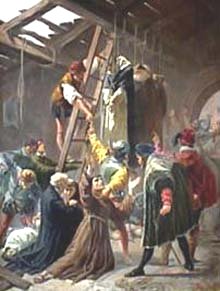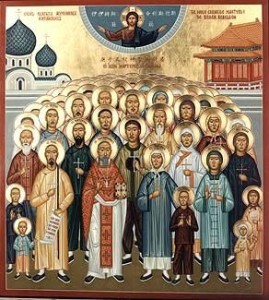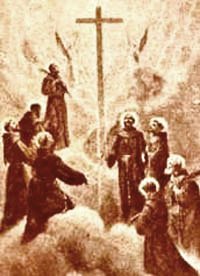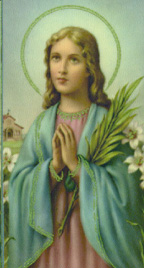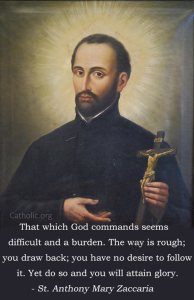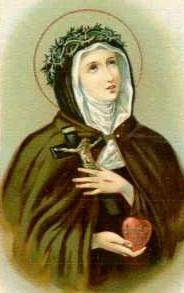
Saint Veronica Giuliani (1660-1727)
Image: Enrosadira
(Franciscan Media) Born in Italy Mercatell and given the name Ursula at Baptism, she showed marvelous signs of sanctity at an early age. — When but 18 mos old, she uttered her first words according to EWTN to a shopman who was serving a false measure of oil saying distinctly to him: “Do justice, God sees you.”
By the age of 3 , Ursula began to be favored with ‘Divine Communications’ and to show great compassion to the poor and would set apart a portion of her food and some of her clothing for poor, scantly clad children. These traits together with a great love of the Cross developed as she grew older.
When Ursula was 17 she joined the Capuchin ‘Poor Clares’ her father had preferred she would marry but she instead convinced him that she wanted to become a Nun — During this time in her life, Ursula took the name ‘Veronica’ in memory of the Passion. At the conclusion of the ceremony of her reception, the Bishop said to the Abbess, “I commend this new daughter to your special care for she will one day be a great Saint.”
During Veronica’s first years at the monastery,she became absolutely submissive to her directors, though her Novitiate was marked by extraordinary interior trials and temptations to leave the monastery and return to the world.
At Veronica’s profession in 1678 she conceived a great desire to suffer in union with Our Savior crucified for the conversion of sinners. — About this time she had a vision of Christ bearing His Cross and henceforth suffered an acute physical pain in her heart.
Following Sister Veronica’s death, the figure of the Cross was found impressed upon her heart.
In 1693 Sister Veronica entered upon a new phase in her spiritual life, when she had a vision of the Chalice symbolizing the ‘Divine Passion’ which was to be reenacted in her own soul. At first, Sister Veronica shrank from accepting it and only by great effort eventually submitted, she then began to experience intense spiritual suffering. — One year later, Sister Veronica received the impression of the ‘Crown of Thorns’ the wounds becoming visible and the pain permanent.
By Order of the Bishop, Sister Veronica submitted to medical treatment but received no relief from the pain. While Sister Veronica lived in this supernatural mystical life, she remained a practical Woman of her affairs.
Foe 34 years, Sister Veronica was the ‘Novice Mistress’ (trainer of the novices that came to the monastery) guiding them with great prudence. In 1716 Sister Veronica was elected Abbess and during her tenure, she enlarged the convent and had a good system of plumbing laid down.
Pope Emeritus Benedict XVI said of Saint Veronica Giuliani in December 2010 that she proved “a courageous witness of the beauty and power of Divine Love,” who received the divine gift of intimate unity with Christ in his suffering, death and a “true image” of Jesus Christ on the Cross.
Saint Veronica placed Christ above all things in her life, as could be seen in her diary (which spans more than 22,000 handwritten pages) — In her writings, she described a relationship with Christ that saw him as a Divine spouse to whom she sought to be more and more united in love. — Sister Veronica, “also experienced a relationship of profound intimacy with the Virgin Mary, attested by the words she heard Our Lady say one day which she reports in her diary:
“I made you rest on my breast, you were united with my soul
and from it you were taken as a flight to God.”
Saint Veronica Giuliani invites us to develop in our Christian life, our union with the Lord in living for others, abandoning ourselves to His will with complete and total trust and the union with the Church, the Bride of Christ.
Saint Veronica was Beatified in 1804 by Pope Pius VII and Canonized in 1839 by Pope Gregory XVI
More here from Catholic News Agency
 St. Kateri Tekakwitha (1656-1680)
St. Kateri Tekakwitha (1656-1680)
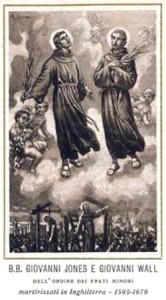
 Saint Benedict of Norcia (480-543) Image:
Saint Benedict of Norcia (480-543) Image: 
